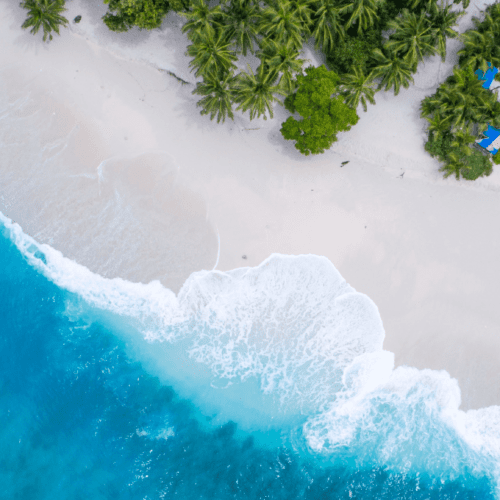Related Articles
Where is Nepal Located? Discover Nepal’s Position in South Asia and the Himalayas
Understanding the location of Nepal on the map helps to appreciate its fascinating geographic and cultural context. This small yet remarkably diverse country is home to some of the highest peaks on Earth, including Mount Everest. Nepal’s geography plays a critical role in its cultural identity and its importance within the region. In this article, we will explore exactly where is Nepal located, its neighboring countries, and what makes its position in South Asia and the Himalayas so special.
Read More : Best time to visit Nepal
Location of Nepal on the Map
- Nepal's Position: It is bordered by India on the south, east, and west, and China (Tibet) to the north.
- Location on the Map: When you look at Nepal's location on the map, it appears as a narrow strip of land between these two massive countries, stretching from the Himalayas in the north to the plains of the Terai in the south.
Nepal's Geography and Natural Beauty
- Geographical Features: Nepal is home to eight of the world’s 14 highest peaks, including the famous Mount Everest. The country’s position in the Himalayas gives it dramatic landscapes, from lush jungles to alpine meadows.
- Nepal's Natural Resources: The country is also rich in rivers, lakes, and forests, providing essential resources for its people and wildlife.
The location of Nepal on the map is vital not only for tourism but also for ecological and conservation efforts. The country’s varied topography means that the climate ranges from tropical in the south to alpine in the northern highlands, with a corresponding diversity of flora and fauna.
Read More : Places to visit in Nepal
Neighboring Countries of Nepal
- india : Nepal is bordered by India on the south, east, and west, with a total border length of 1,690 km. India is an important trading partner and a cultural neighbor, and their shared history and people make India a significant influence on Nepal,
- China: To the north, Nepal shares a border with China (Tibet) that spans 1,236 km. The northern border is home to the world’s highest peak, Mount Everest, and has made Nepal a prime destination for mountaineers and trekkers worldwide.
Nepal in South Asia
- Cultural Significance: Nepal is the birthplace of Lord Buddha and a key center for both Hinduism and Buddhism. Its rich cultural and religious diversity makes it an essential part of South Asia.
- Economic Role: Nepal plays an important role as a tourism hub in the region, thanks to its stunning landscapes, trekking routes, and unique cultural landmarks.
The strategic location of Nepal in South Asia also makes it a key player in regional politics and trade.
Read More : Religion and culture in Nepal
Nepal's Position in the Himalayas
- Himalayan Peaks: With eight of the world’s highest peaks, including Kangchenjunga and Lhotse, Nepal’s position in the Himalayas attracts adventurers, climbers, and trekkers from around the world.
- Cultural and Spiritual Influence: The Himalayas are integral to Nepalese culture, inspiring spirituality and offering breathtaking landscapes for outdoor enthusiasts.
Cultural and Historical Significance of Nepal’s Location
- Cultural Exchange: Nepal’s proximity to India has resulted in shared religious practices such as Hinduism, while its relationship with China has brought Tibetan Buddhism to the forefront. The geography of Nepal has allowed these religions to coexist peacefully, making Nepal a melting pot of culture and traditions.
- Historic Trade Routes: Nepal's position also places it on important ancient trade routes, linking the subcontinent with Tibet and China. Historically, Nepal's location allowed it to act as a conduit for cultural and economic exchanges, including the transmission of art, language, and religious practices.
Why Visit Nepal?
- Cultural Diversity: Nepal’s mix of Hindu and Buddhist cultures offers a unique spiritual experience. Key religious sites such as Lumbini, the birthplace of Buddha, are a major attraction.
- Adventure Tourism: Nepal is known as an adventurer’s paradise, offering trekking, mountaineering, and rafting opportunities. With its diverse geography, there is something for every outdoor enthusiast.
- Historical Significance: Nepal is home to several UNESCO World Heritage Sites, including the ancient city of Kathmandu, temples, and palaces that showcase its rich history and architecture.
Call-to-Action
Frequently Asked Questions
Nepal is located in South Asia, bordered by India to the south, east, and west, and China to the north, positioned within the Himalayas.
The best times to visit are during the autumn (September-November) and spring (March-May) seasons, offering pleasant weather for outdoor activities and trekking.
Yes, visitors to Nepal typically require a visa, which can be obtained on arrival at the airport or from Nepali embassies abroad.
Nepal shares borders with India and China. The total length of Nepal’s borders is about 2,926 km.
Kathmandu, the largest city in Nepal, is the political, cultural, and economic capital of the country.
Nepal has an area of 147,181 km², making it a relatively small country with vast natural and cultural richness.
Nepal is considered safe for travellers. However, it is important to be mindful of basic safety precautions, especially when trekking or exploring rural areas.
Nepal can be accessed by air through Tribhuvan International Airport in Kathmandu, with direct flights from major international airports worldwide.
Puneet Khurana
Related Articles
Where is Nepal Located | Best Time to Visit Nepal | What Language is Spoken in Nepal | Places to Visit in Nepal | What are People from Nepal Called | Kathmandu Beautiful Nepal | Best Treks in Nepal | Nepal Weather by Month | What is Nepal Famous For | Is Nepal Safe for Tourists | What is the Religion of Nepal | Trekking in Nepal for Beginners | Travel to Nepal from USA | Monsoon Season in Nepal | Nepal Adventure Travel Options | Nepal Sightseeing Highlights | Nepal Travel Guide for Beginners | Religion and Culture in Nepal | Scenic Spots in Nepal for Photographers | Top Attractions in Kathmandu and Nepal









